Olympic Weightlifting Weight Classes: New 2025 Updates
Author:
Reviewed by:
(21 years of Oly Lifting experience)
Unlock your full potential by engaging with our experts and community! Have questions about your fitness journey or looking for expert advice on weightlifting techniques? Don’t hesitate — leave a comment below and Sergii Putsov will provide a personalized answer and insights to help you reach your goals.
Torokhtiy is reader-supported. Some links are affiliate links, and we may earn a commission at no extra cost to you. See our disclosure page for details.
We’ll discuss the new olympic weightlifting classes for men, women, and young lifters in Olympic weightlifting in this article.
We’ll also cover how to select the weight class that’s appropriate for you and how to accomplish that class comfortably.
Athletes in Olympic weightlifting compete in weightlifting divisions based on their body mass. Previously in 2018 the International Weightlifting Federation approved the current weight classes – 10 for men and women, respectively.
Only 5 of the total ten categories featured during the Paris Olympics in 2024 for each gender. Last December at the IWF Congress approved a new set of weight classes. This time it will be less – 8 for men and women, respectively.
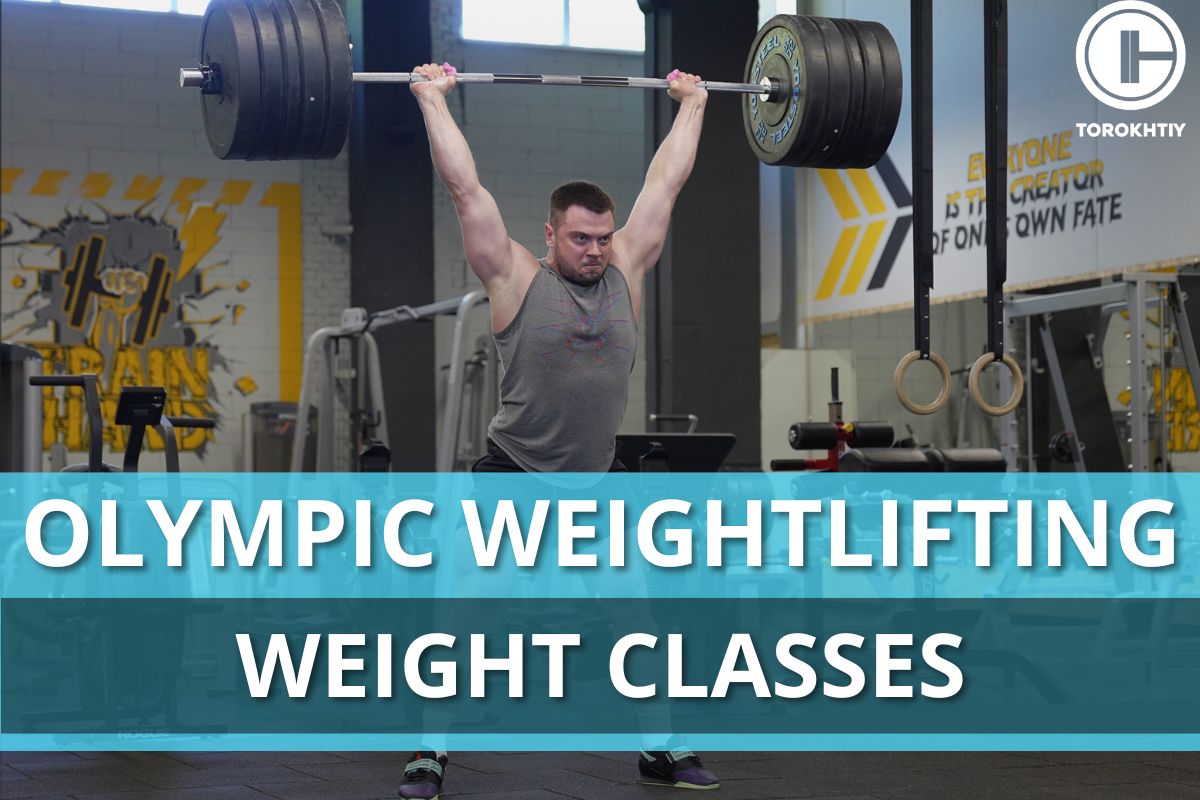
New Olympic Weightlifting Weight Classes
In the beginning of December the Congress of International Weightlifting Federation which took place at the capital of Bahrain – city of Manama announced updated bodyweight categories for men and women, reducing the number of classes from 10 to 8.
Here’s the breakdown of olympic weightlifting weight classes 2025:
Women’s Categories:
• 48 kg, 53 kg, 58 kg, 63 kg, 69 kg, 77 kg, 86 kg, +86 kg
Men’s Categories:
• 60 kg, 65 kg, 71 kg, 79 kg, 88 kg, 98 kg, 110 kg, +110 kg
While these are the new weightlifting weight classes for all IWF world and continental competitions for senior and Junior (up to 20 y.o.) lifters, the Olympic Games will probably feature only 4-5 categories per gender.
It is important to mention that there are only rumors about “Olympic categories”. The final decision on which classes will appear in the Olympics is expected later this year. Also there is no official information aboutYOUTH age groups as 13 – 17 years of age yet.
The competition season with new Men’s and Women’s categories will start later this year in June 2025, meaning that most continental senior competition, such as Europeans and PanAms will be still conducted with old weight classes.
Why the Change?
The decision to reduce the number of weight classes reflects a broader effort by the IWF to modernize the sport, make it more competitive, and meet the demands of the International Olympic Committee.
Let’s look at the key factors driving this change.
1. Streamlining Competitions
With fewer weight classes, competitions will run more efficiently, with tighter schedules and more head-to-head matchups in each category. This not only enhances the viewing experience for fans but also makes the sport more appealing to broadcasters and sponsors.
2. Addressing Integrity Concerns
Over the years, the sport has faced challenges with doping and credibility. By reducing the number of weight classes, the IWF aims to simplify testing protocols and promote transparency. A smaller number of categories means fewer opportunities for manipulation or “tactical weight cutting,” ensuring fairer competition.
3. Increasing Competition Level
Fewer weight classes mean larger pools of athletes per category. This increases the level of competition and ensures that only the very best lifters compete at the highest levels, creating more excitement and higher performance standards.
What It Means for Athletes
The introduction of new weight classes isn’t just about adjusting numbers on a chart – it fundamentally reshapes the landscape of the sport. With the introduction of these new categories, all existing world records will be nullified.
This update will bring a lot of interest.
1. New Record Standards
Athletes will have the opportunity to set new world records in their respective categories, sparking intense competition and motivating lifters to leave their mark in the history books. It is important to remember that this change will also reset all continental and even National records for all age divisions.
2. Challenges for Fans and Historians
Comparisons between old and new records will be tricky, as the weight classes and competitive landscapes will have shifted. Some records from the previous classes, like Lasha Talakhadze’s 267 kg clean and jerk, will remain legendary but will no longer exist as official benchmarks.
2. Opportunities for Rising Stars
For younger or emerging lifters, this reset levels the playing field, giving them a chance to achieve records in a brand-new era of weightlifting.
The reduction in categories increases the number of athletes in each weight class. This brings new competitive landscape.
3. Tougher Qualification
Lifters will face fiercer competition to secure spots at major championships and the Olympics. The reduced number of Olympic categories, in particular, will heighten the stakes.
4. Reassessing Weight Strategies
Lifters will need to adapt their training and diet to fit into one of the new categories. This could involve moving up or down in weight while maintaining or improving their strength-to-weight ratio.
5. National Team Strategies
Federations will need to rethink how they distribute resources and prepare athletes for international competitions. Some may shift their focus to specific weight classes where their athletes are more competitive.
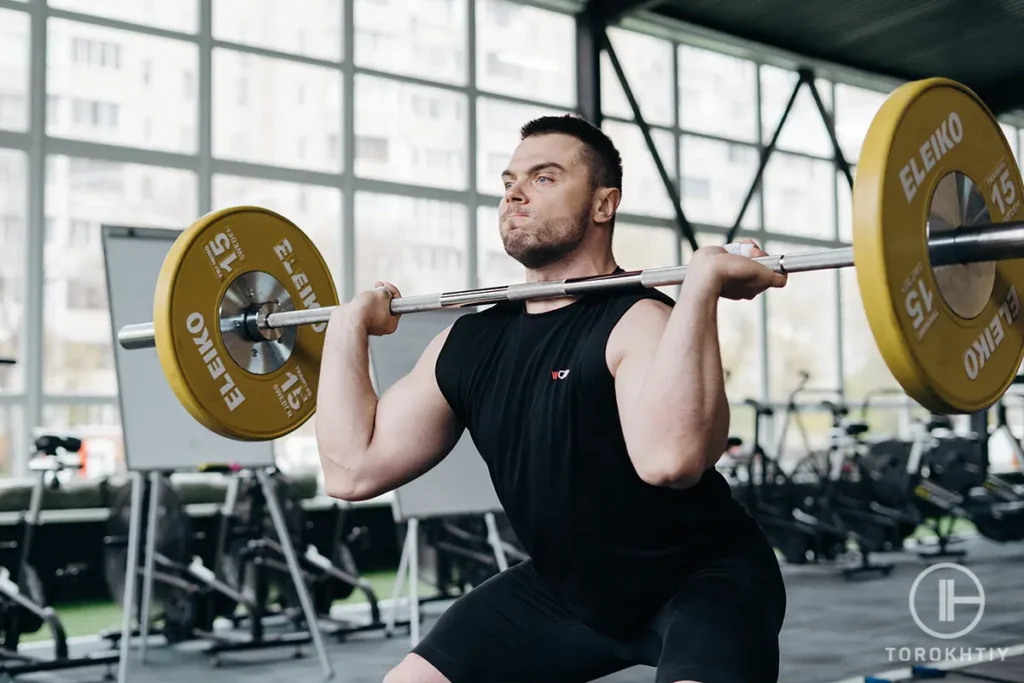
Old Olympic Weightlifting Weight Classes
Since 1920, every Olympics has included weightlifting competitions, which made their debut in 1896. The Sydney Olympic Games in 2000 saw the debut of the women’s competition. Different Olympic weightlifting weight classes are created for the athletes based on their weight.
For both the Men’s and Women’s competitions, there are 10 weight categories at the World, Continental and National Championships. Recently the International Weightlifting Federation and International Olympic Committee changed weight classes rules for Olympic Games participants, so at the Paris Olympics 2024, there will be five distinct Olympic weightlifting categories.
1. Men
During the World, Continental and National Championships Junior (under 20 years old) and Senior men compete in 10 weight classes:
55 kg, 61 kg, 67 kg, 73 kg, 81 kg, 89 kg, 96 kg, 102 kg, 109 kg, 109 kg +
For the 2024 Summer Olympics in Paris, there are five different Olympic weightlifting classes for men. There are two less weight divisions here than were in Tokyo in 2020. Only the 61 kg and 73 kg categories from the previous list have been kept. The weight categories range from 61 kg to 102 kg +. These are the five weight categories:
61 kg, 73 kg, 89 kg, 102 kg, 102 kg +
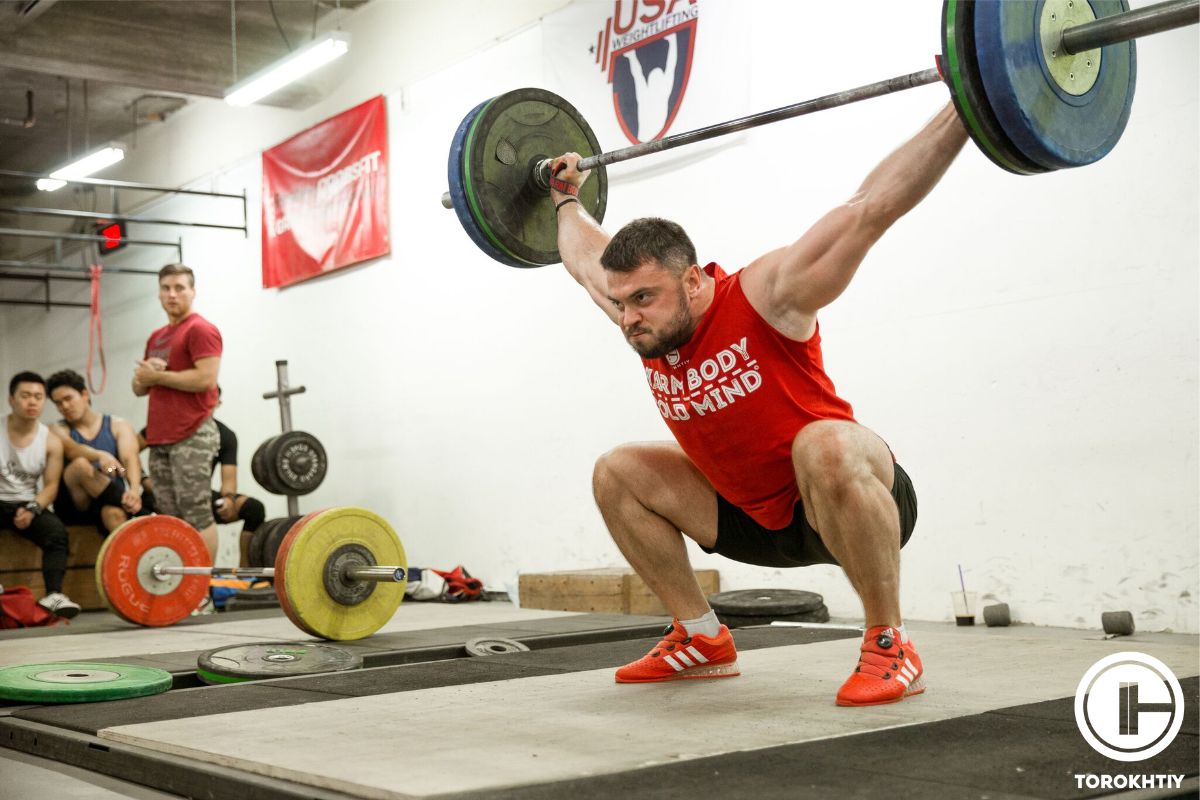
2. Women
Same as men, Junior (under 20 years old) and Senior women compete in 10 women’s weightlifting weight classes at the World, Continental and National Championships.
Here is all of them:
45 kg, 49 kg, 55 kg, 59 kg, 64 kg, 71 kg, 76 kg, 81 kg, 87 kg, 87 + kg
Five weightlifting divisions will make up the women’s weight divisions In Paris 2024, which is two fewer than in Olympics 2020. From the previous Games, only the 49 kg and 59 kg categories are still active. 49 kg is the lightest weight category, and +81 kg is the heaviest. The five various weight categories are as follows:
49 kg, 59 kg, 71 kg, 81 kg, 81 kg +
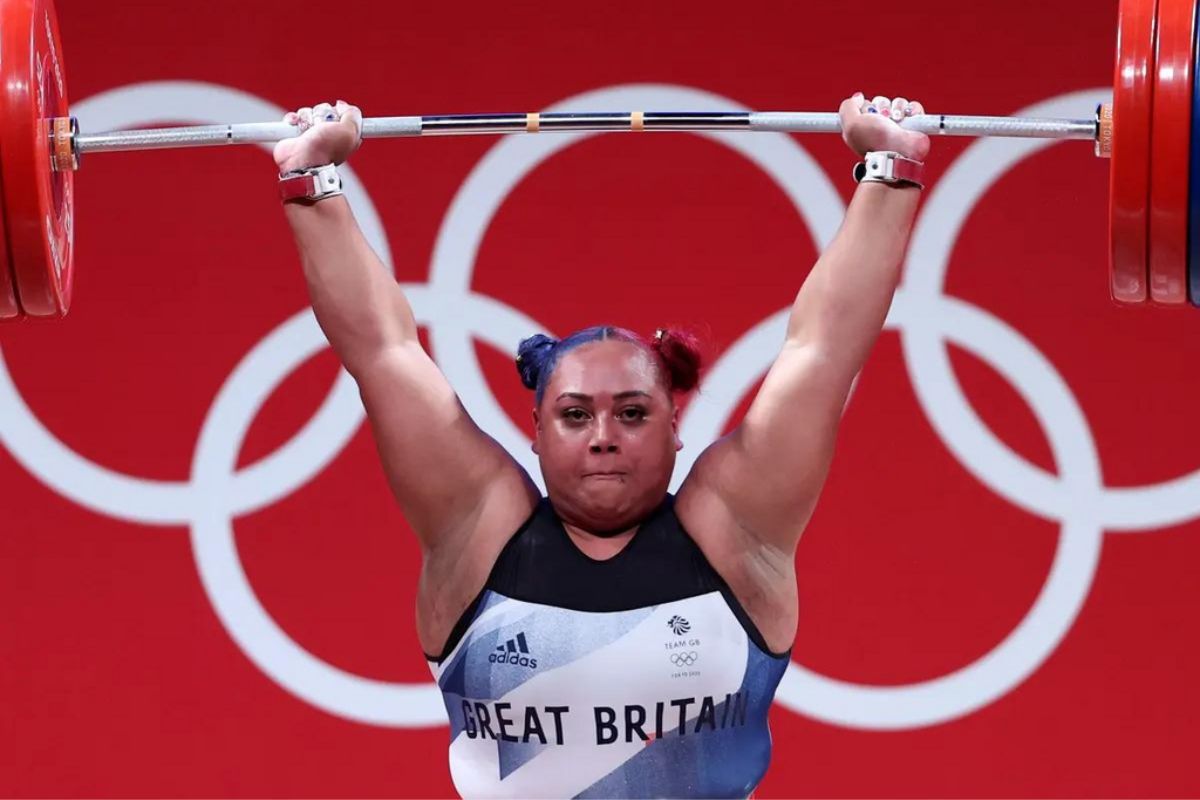
3. Youth
The International Weightlifting Federation recognizes YOUTH age groups as 13 – 17 years of age. For Youth men and women, there are 10 bodyweight categories, respectively. The following IWF weight classes and order must be followed for all IWF tournaments, with the exception of the Youth Olympic Games, which have unique requirements.
| Men | Women |
| 49 kg | 40 kg |
| 55 kg | 45 kg |
| 61 kg | 49 kg |
| 67 kg | 55 kg |
| 73 kg | 59 kg |
| 81 kg | 64 kg |
| 89 kg | 71 kg |
| 96 kg | 76 kg |
| 102 kg | 81 kg |
| 102 kg+ | 81 kg+ |
Also, National Weightlifting Federations can include a custom list of weight classes for younger lifters and use it on local and National competitions. Here is such example from USA Weightlifting Federation (USAW) Rules:
Youth 14-15 years old USAW weight classes:
| Boys | Girls |
| 39 | 36 |
| 44 | 40 |
| 49 | 45 |
| 55 | 49 |
| 61 | 55 |
| 67 | 59 |
| 73 | 64 |
| 81 | 71 |
| 89 | 76 |
| 89+ | 76+ |
Youth 13U (under 13 years old) Bodyweight Categories:
| Boys | Girls |
| 32 | 30 |
| 36 | 33 |
| 39 | 36 |
| 44 | 40 |
| 49 | 45 |
| 55 | 49 |
| 61 | 55 |
| 67 | 59 |
| 73 | 64 |
| 73+ | 64+ |
An athlete may only participate in one bodyweight category during a single competition, with the exception of situations where Youth events are mixed with Junior and/or Senior competitions. The competition schedule must be taken into account by event organizers for events that mix youth, junior, and senior divisions so that competitors can participate just once.
Follow us!

Free!
Get a 2-week Weightlifting Program as a bonus for the subscription to kickstart your training plan!

Free!
How To Decide Which Class Suits You Best
When choosing your weight category for Olympic weightlifting, you should take into account the following four factors:
- Height
- Body Weight
- Percentage of body fat
- Age
Height
Since height will be indicated when an athlete steps on the scale, it assists in determining weight class. If an athlete is at the top of his weight category due to height, but instead of muscle mass, he will be at a huge disadvantage to shorter and much more muscular weightlifters. Because of physical disadvantages, he would not only need to expend more effort to lift the same amount of load as a weightlifter who is shorter, but he would also have fewer force-generating capacity and less muscle mass.
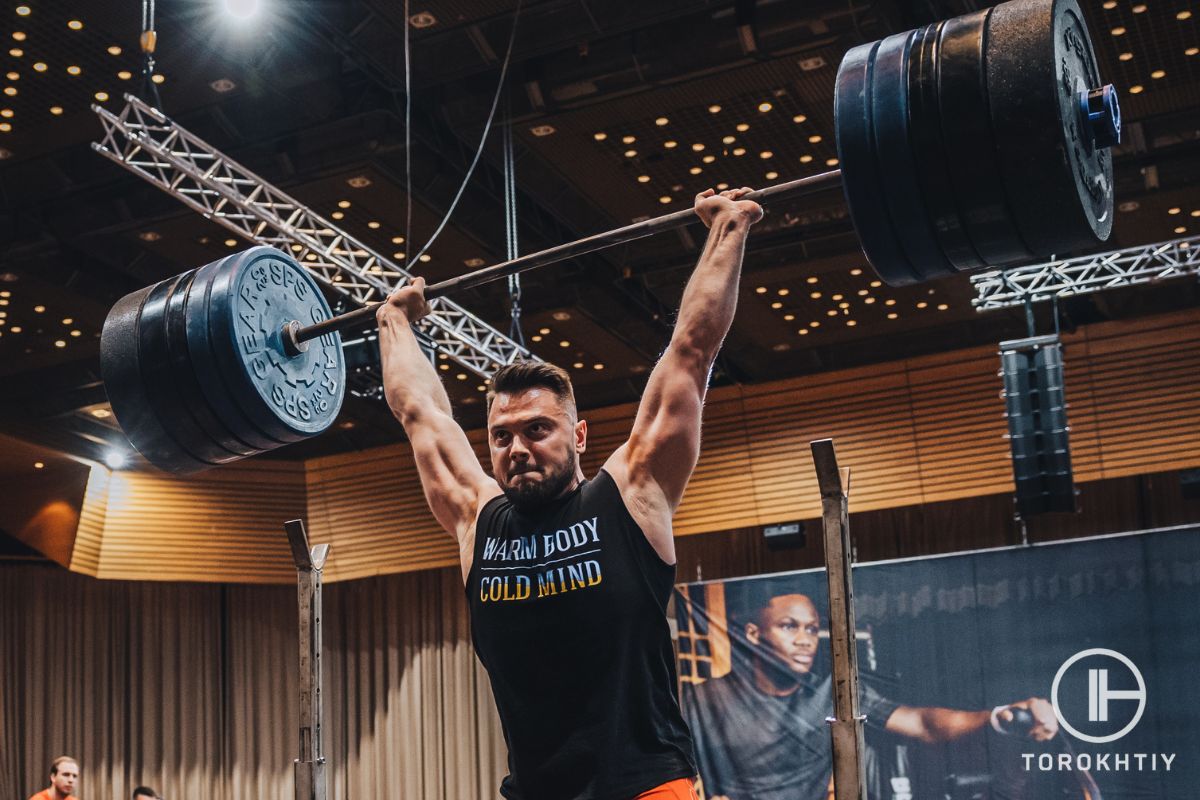
Natural Weight
The weight that the body can naturally stabilize at is referred to as “set point.” This is the body weight that weightlifters should compete at when they first start competing. When he knows his weight, he may check which bodyweight category he falls under for weightlifting and sign up to participate in that division. Athletes should choose a weight class that is close to where they naturally fall. It is feasible to go down or up one category, but moving up or down many weight classes requires time in order to maintain or acquire as much lean mass and prevent gaining fat mass.
Body Fat Percentage
Percentage of body fat may influence weight class selection since it will indicate if it is viable to move down a weight class while maintaining strength or whether it is preferable to move up a class and gain muscle mass. The average person’s body fat may be reduced to between 10% and 15% for males and between 17 and 20% for women before performance starts to suffer. If you are in this position right now, you shouldn’t drop a weight category.
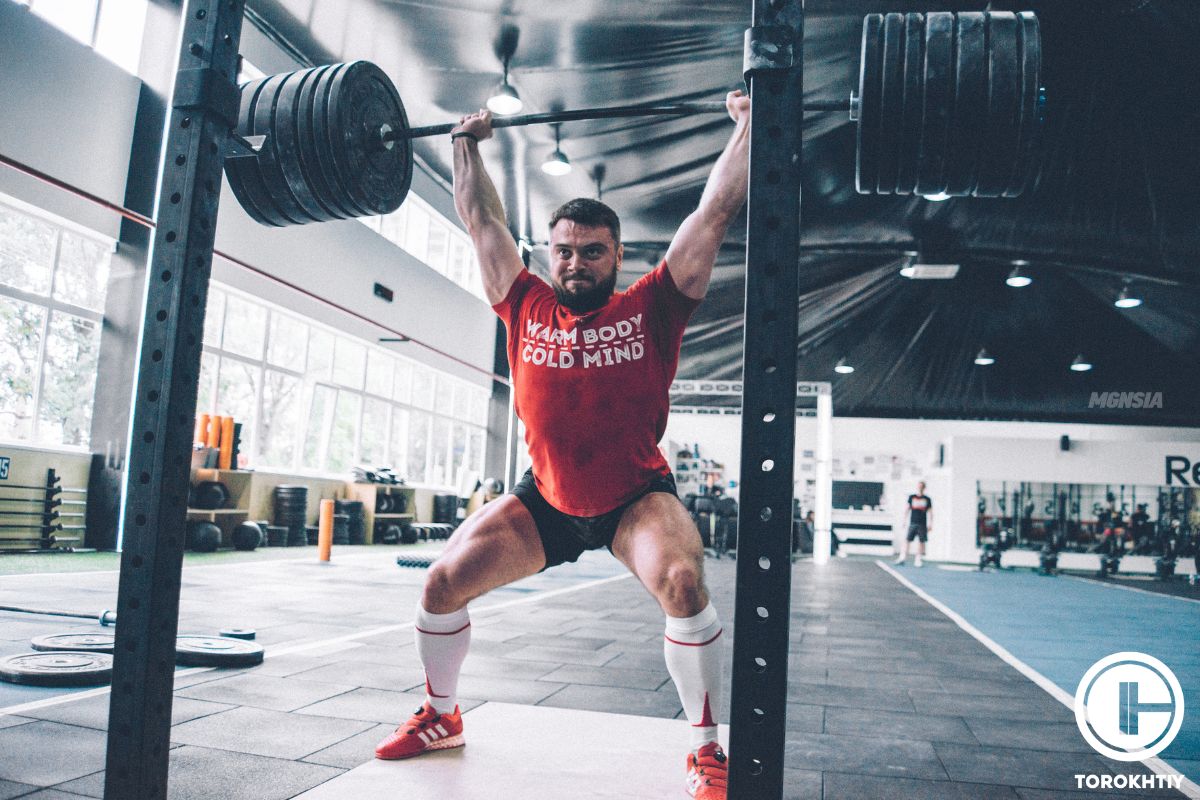
And eventually, when you put on more lean mass, you’ll probably have to gain weight. You may afford to shed some fat mass by reducing a weight class if your body fat percentage is currently more than 30% for women or 25% for male athletes. This will boost your relative strength.
Age
Lifters in their early stages shouldn’t drop out of a weight category while they are progressing. According to research, by doing this, they endanger the growth of their strength and power and may even prevent them from eventually realizing their full potential. Young weightlifters should compete in their native weight class and concentrate on optimizing muscle growth.
Let’s start by defining what a novice is. Anyone who has been training for less than one year or has only twice competed is considered a beginner. A novice shouldn’t attempt to fit into a specific weight class. Athletes should instead compete in the division they belong in. The rationale for this is because a complete beginner should concentrate throughout the competition on enhancing performance and understanding the competition’s flow.
Picking Weight Category as An Advanced Weightlifter
Lifters who have learned the fundamentals and are aiming for higher placings at regional, national, or international competitions are considered advanced. As experienced lifters, it should be objective to participate in the weight division in which athletes have the highest chance of succeeding. Lifter will be the most competitive in the weight category where he will have the greatest lean muscle mass, the least amount of body fat, and the ability to sustain strength and performance.
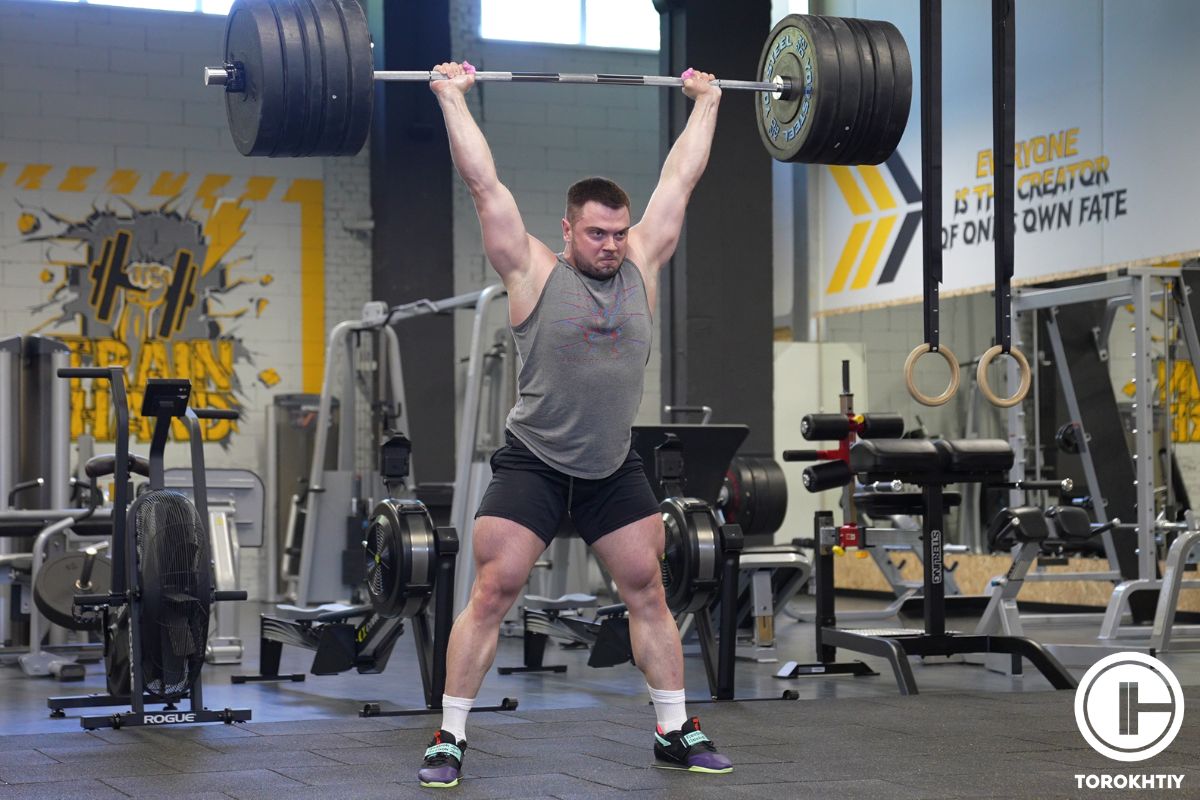
FAQ
What is the difference between group A and group B in weightlifting?
Athletes are divided into groups of 10 competitors at major and international championships. Lifters in group B are considered to be “worse” lifters since they submitted lower entries than weightlifters in group A. This is to prevent groups of more than 10 lifters from participating in a competition because of extended rest periods and TV timings. A competition with 10 lifters lasts roughly 90 minutes, but every additional lifter adds at least 5+ minutes to the session. This does not exclude a weightlifter from B group from winning a medal.
What is the most weight ever lifted in an Olympic lift?
Super heavyweight Georgian Lasha Talakhdze published a video showing himself clean-and-jerking 270 kilos on April 29, 2021. Since the lift was performed during training, it is not a world record. Talakhdze now holds the clean and jerk record with a weight of 267 kg.
Conclusion
In the early stages of Olympic weightlifting, selecting a weight class to participate in will come relatively easily. Changing categories might help to become more competitive as we get more experience. But keep in mind, that if you do poorly in the meet, the weight category you competed in won’t matter. So, do you think I left anything out? Let’s discuss it in the comments!
Why Trust Us?
With over 20 years in Olympic weightlifting, strength training, nutrition coaching, and general fitness our team does its best to provide the audience with ultimate support and meet the needs and requirements of advanced athletes and professional lifters, as well as people who strive to open new opportunities and develop their physical capabilities with us.
By trusting the recommendations of our certified experts in coaching, nutrition, and sports training programming, as well as scientific consultants, and physiotherapists, we provide you with thorough, well-considered, and scientifically proven content. All the information given in the articles concerning workout programming, separate exercises, and athletic performance, in general, is based on verified data.
The product testing process is described in more detail here.
Author: Sergii Putsov
Head of Sport Science, PhD
Best Results: Snatch – 165 kg,
C&J – 200 kg
Sergii Putsov, Ph.D., is a former professional weightlifter and National team member, achieving multiple medals in the 94 kg weight category at national competitions. With a Master’s degree in “Olympic & Professional Sport Training” and a Sport Science Ph.D. from the International Olympic Academy, Greece, Sergii now leads as the Head of Sport Science. He specializes in designing training programs, writing insightful blog articles, providing live commentary at international weightlifting events, and conducting educational seminars worldwide alongside Olympic weightlifting expert Oleksiy Torokhtiy.
Reviewed by: Oleksiy Torokhtiy
Olympic Weightlifting Champion, PhD in Sport Science
Best Results: Snatch – 200 kg,
C&J – 240 kg
Oleksiy Torokhtiy is a professional athlete boasting 20 years of experience in Olympic weightlifting. With multiple European and World titles under his belt, he has showcased his prowess in two Olympic Games (Beijing 2008 and London 2012). Upon concluding his illustrious career, Oleksiy dedicated himself to coaching. By 2022, he had conducted over 200 weightlifting seminars worldwide. He is the visionary behind an international sportswear and accessories brand known for its motto, “Warm Body Cold Mind.” Additionally, he is an esteemed author and the creator of a series of training programs and eBooks.




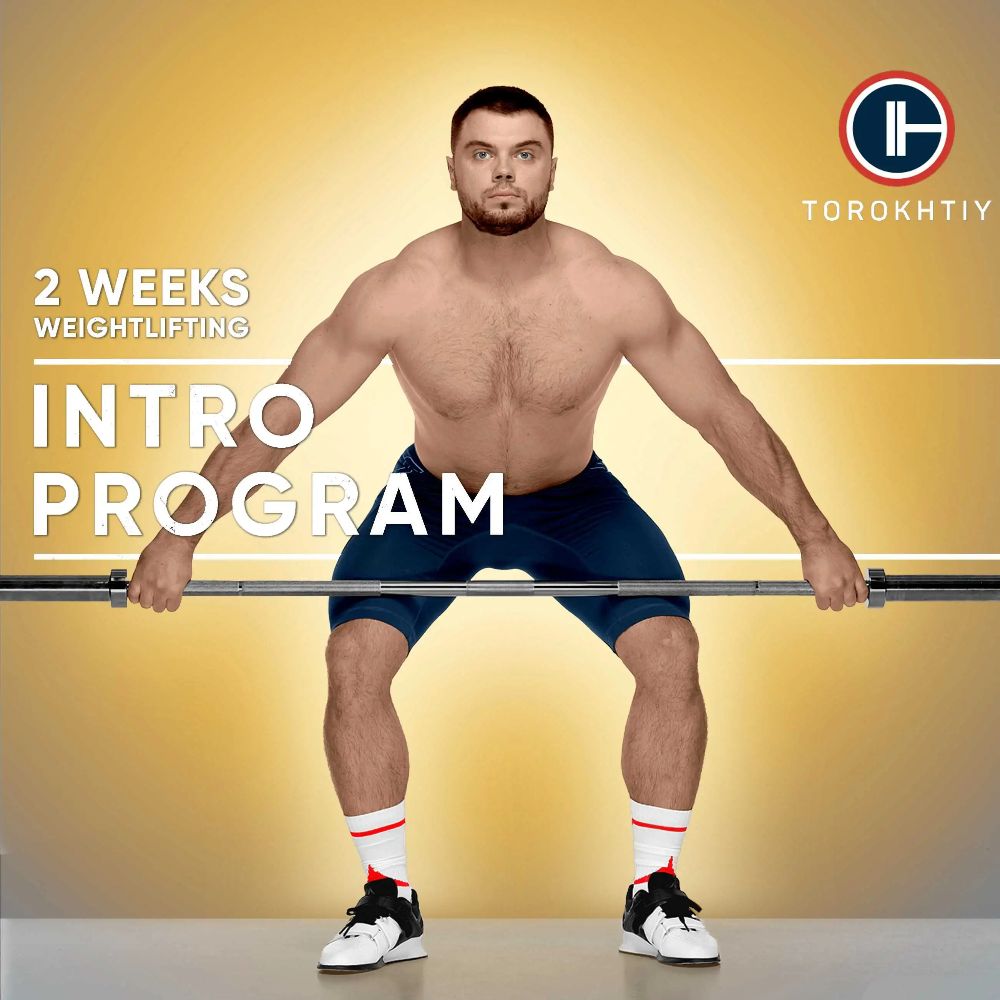
What are the best Exercises anyone can do to protect their elbows ? Many arms have been broken during lifting… Kindly tell… Why some lifters broke their elbows? Wrong positioning?
Hello @Abhijit!
There are several exercises that can help protect your elbows, such as wrist curls, reverse wrist curls, and tricep extensions.
These exercises help strengthen the muscles and tendons in your arms, which can prevent injury and strain on your elbows.
It’s also important to maintain proper form and technique when lifting weights, as incorrect positioning can put undue stress on your joints and increase your risk of injury.
Some lifters may break their elbows due to excessive weightlifting or using improper technique, which can cause a sudden and severe injury.
So it’s crucial to listen to your body and take breaks when necessary to prevent injury and ensure long-term health.
Hey there, fellow lifters! I recently learned about the changes in the Olympic powerlifting weight classes, and I have to say, I’m pretty excited about it! As a young athlete, I’ve been trying to find the weight class that’s right for me. And with these new changes, it’s now even easier to do that. The fact that there are only five weight categories now means that there’s more competition in each one, which I think is a good thing. And the weight ranges themselves are more manageable, so it’s easier to know which category to aim for. Plus, the changes take into account factors like height, body weight, percentage of body fat, and age, which I think is really important. Of course, there are some cons to the changes. Some lifters who were in-between weight classes might find it harder to fit into one of the new categories. And some people might miss the old weight classes that they were used to. But overall, I think these changes are a positive step for Olympic powerlifting. I can’t wait to see how they play out in the next Olympics!